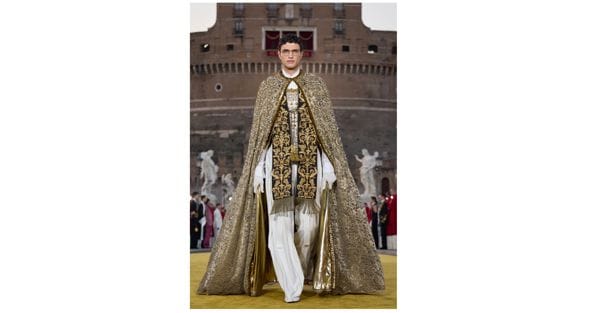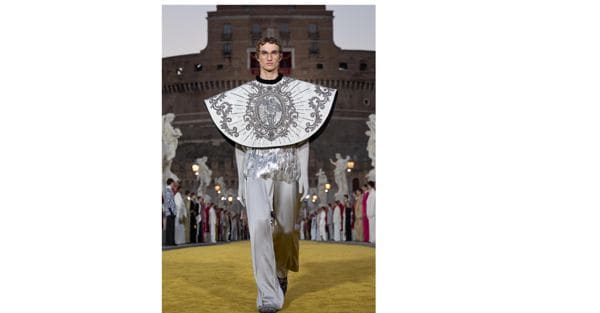Dolce & Gabbana: Between Ecclesiastical-Inspired Tailoring and Patronage

Assuming the devil exists, at least in his earthly incarnations, let's let him wear Prada: the sequel to the twenty-year-old film is scheduled for release in 2026, and images of the looks of the leads Meryl Streep and Anne Hathaway are starting to circulate. Jing Daily, a Chinese website dedicated to the global fashion system and its ramifications in China, asked "Does the devil still wear Prada?" A question that—going beyond fictional characters, Hollywood caricatures, and individual brands—draws attention to the role fashion plays in our societies.

Dolce & Gabbana's haute couture fashion show in front of Castel Sant'Angelo on July 15th in Rome was not only a feast for the eyes of those who love textile craftsmanship and creativity: it also reminded us that fashion, in the broadest and noblest sense of the term, has always had a place in the millennia-old history of the Church (not just the Catholic Church) and the Vatican.
The presentation of over one hundred men's looks, composed of one-of-a-kind pieces, was part of the events that Domenico Dolce and Stefano Gabbana have organized every summer since 2021 in the most evocative locations in Italy. However, it had never happened before that the Sant'Angelo Bridge had become a veritable catwalk, framed by angels sculpted by Bernini and his apprentices. The risk of a perceived clash between the sacred and the profane was completely averted, also because the dress codes within the Church, studied without prejudice, represent a sort of haute couture ante litteram.

"We conducted extensive and passionate research, observing works of art and reading essays on the subject," explained Andrea Marchesi, head of haute couture at Dolce & Gabbana. "We were inspired by the silhouettes of cardinals' robes, but also by the works of art you encounter at every step, at every glance, when you're in Rome. It was a wonderful creative and textile challenge, intended as a tribute to age-old aesthetic codes, but also to the artisanal expertise we still possess in Italy, which allowed us to conceive and bring these garments and accessories to life."
The events in Rome also provided an opportunity to reaffirm Domenico Dolce and Stefano Gabbana's commitment to Italy's cultural heritage, to which the textile and artisanal tradition rightfully belongs. Rome, as we know, boasts so much more that bears witness to a thousand-year architectural history.
ilsole24ore




